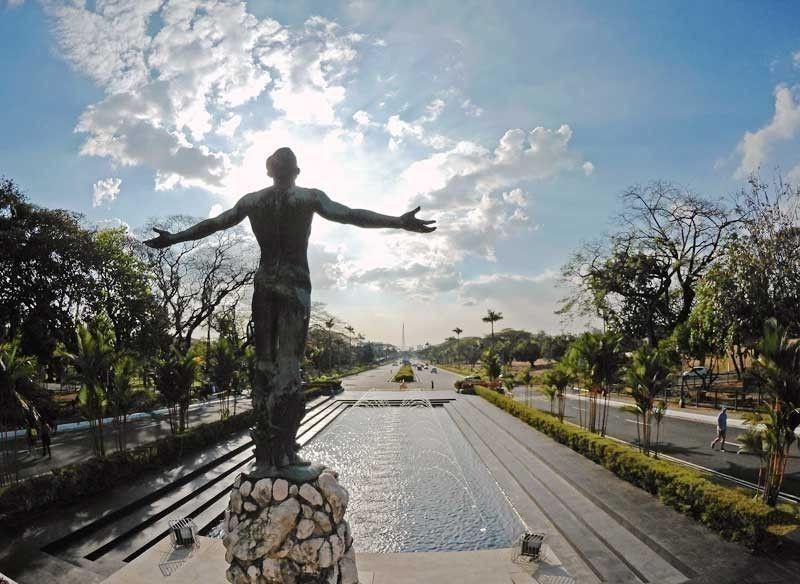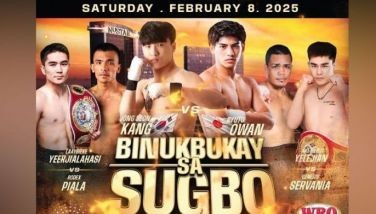UP creating archipelagic, oceanic university

MANILA, Philippines — A new university under the University of the Philippines system is currently in the works, UP president Angelo Jimenez disclosed yesterday.
Jimenez said the university is laying the groundwork for what could be the 10th university in the UP System by connecting the marine and ocean programs in UP Diliman and UP Visayas.
He added that the pooling of programs in the Marine Science Institute of UP Diliman and the Fisheries and Oceans Program of UP Visayas would give birth to “an archipelagic and oceanic virtual university.”
“It will become the 10th UP university in our system. This initiative aims to enhance existing program offerings, introduce digital ad virtual platforms and develop transdisciplinary courses,” Jimenez announced during the National Higher Education Day Summit in Pasay City.
The UP president said the premier state university plans to collaborate with other state universities and colleges, foreign universities with similar programs and various maritime industry stakeholders to craft curricula and roadmaps for research and innovation.
These will be aimed at developing “the Blue Economy and the Archipelagic Nation by 2050 in alignment with Pagtanaw 2050,” according to Jimenez, referring to the Department of Science and Technology’s foresight and strategic planning project.
The Science, Technology, and Innovation or STI roadmap under Pagtanaw 2050 aims to make the country a “prosperous, archipelagic, maritime nation characterized by a society that is inclusive, productive, sustainable, educated and healthy.”
Marcos Jr.to boost HEIs
As Philippine universities fell in the recent Asia university rankings, President Marcos yesterday called for a “comprehensive” and “all-encompassing” strategy to further improve the state of tertiary education in the country.
In his speech at the National Higher Education Day Summit in Pasay City, Marcos lamented the exclusion of Philippine universities in this year’s Times Higher Education (THE) Asia University Rankings.
“Unfortunately, no Philippine university has reached Top 100, with the country’s top schools either dropping or maintaining their rankings,” he said. “This just goes to show that much work is still to be done. We must pursue a comprehensive and all-encompassing strategy that will turn this trend around.”
As of December last year, however, at least 81 higher educational institutions (HEIs) had been included in various world university rankings, which is higher than 52 in July last year, according to the President.
He emphasized that improving higher education and making it responsive to the present and future needs of society is “front and center” of his administration’s national development agenda.
“Giving the youth the right competencies and skills and training is the only way for them to prevail and to prosper in this highly competitive world,” Marcos said.
“Without an educated workforce that will implement them, any national economic blueprint will remain simply that – blueprints. We will not have the means or the capacity or the labor force to be able to make those plans realities,” he added.
The success of the country’s development agenda relies heavily on the availability of a strong, resilient and skilled human resource, according to the Chief Executive.
He also gave assurance that his government remains committed to the continuing provision of free tertiary education in public universities and colleges for qualified students under the Universal Access to Quality Tertiary Education Act.
“We have allocated close to P134 billion for our state and local universities and colleges this year so that more students can receive free tertiary education and more families will be eased of the burden of having to pay for college,” Marcos said.
As of Jan. 4, there are 1,977 HEIs in the country. Of the figure, 113 are state universities and colleges, 137 are local universities and colleges, 1,714 are private HEIs and 13 are other government schools, Commission on Higher Education (CHED)-supervised institutions and special schools.
Ateneo de Manila University placed in the 401-500 bracket based on the recently published THE Asia rankings.
UP placed in the 501-600 bracket from last year’s 201-250.
De La Salle University remained in the 501-600 bracket, while University of Santo Tomas entered the rankings in the 601+ bracket, tied with Mapúa University. – Helen Flores, Pia Lee-Brago
- Latest
- Trending




























